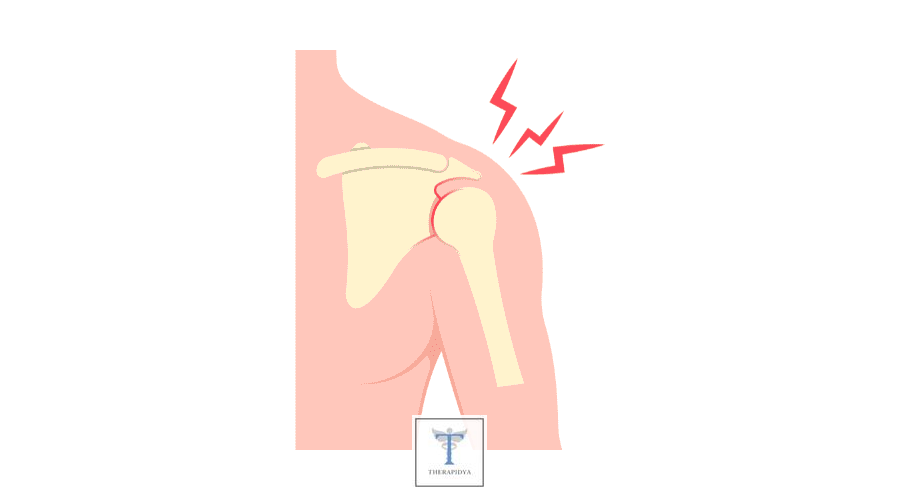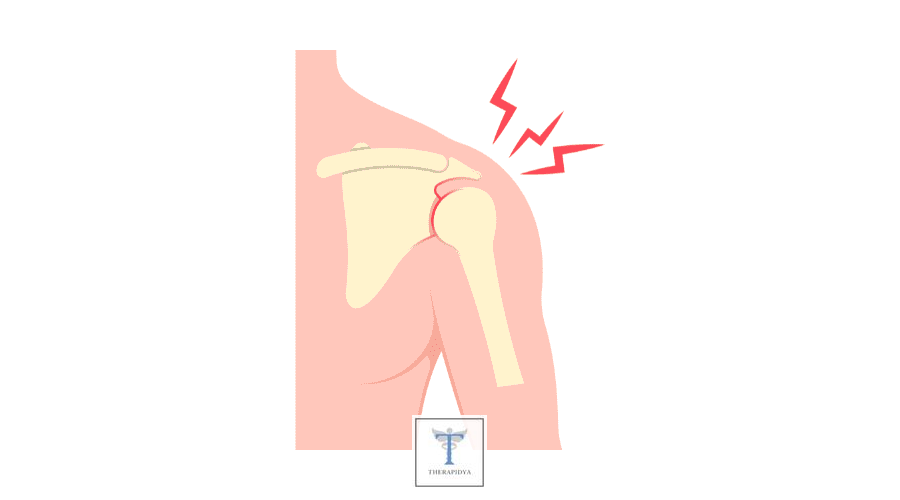Bursitis .. A Very Simplified Guide 2023
Bursitis, a common medical condition, affects the fluid-filled sacs called bursae found in joints throughout the body. These sacs help reduce friction and cushion the movement of the bones. When the bursae become inflamed or irritated due to injury, overuse, or infection, it can lead to bursitis.
In this article, we will discuss bursitis in a simple and easy to understand way. We will cover the causes, symptoms, and treatment options for this painful condition. It is important to seek medical attention if you suspect you have bursitis or have persistent joint pain to prevent further damage and complications.

About Bursitis
Bursitis is the inflammation of a bursa, which acts as a cushion between the muscle and bone near a joint to reduce friction caused by movement and make the joint more flexible. The condition is usually caused by overuse, although it can be caused by gout or an infection. Symptoms include pain, redness, warmth, and swelling around the affected joint. Diagnosis involves a physical examination and sometimes X-rays or fluid analysis.
Treatment options for bursitis include activity modification, rest, and taking nonsteroidal anti-inflammatory drugs (NSAIDs) to reduce discomfort and inflammation. Acetaminophen and physical therapy may also be effective. If the pain is severe or does not improve, corticosteroid injections or surgery may be necessary. Prevention involves avoiding repetitive motion of a joint, losing weight if overweight, and using protective gear if repeated stress on a bursa cannot be avoided. The outlook for most people with bursitis is excellent, although a small number of people may be bothered for a prolonged period.
Causes of Bursitis
Bursitis is a medical condition that occurs when a bursa, the fluid-filled sac that acts as a cushion between the bone and muscle in a joint, becomes inflamed. This inflammation can cause pain and discomfort around the affected joint, making it difficult to move the joint with ease. Bursitis is a common condition that affects millions of people worldwide. While the exact cause of bursitis remains unclear, there are several factors that are known to contribute to its development. This blog post will delve into the causes of bursitis, including genetic, environmental, and lifestyle factors that may increase the risk of developing the condition.
– Overuse or injury: Repetitive use or injury to a joint, such as those experienced by athletes or individuals who perform manual labor, can irritate the bursa and lead to inflammation.
– Age: As we age, our joints and tissues become more prone to wear and tear, leading to an increased risk of developing bursitis.
– Weight: Being overweight or obese puts extra pressure on the joints, which can lead to inflammation and bursitis.
– Medical conditions: Certain medical conditions, such as diabetes or rheumatoid arthritis, can increase the risk of developing bursitis.
– Infection: In rare cases, bursitis can be caused by an infection in the bursa.
– Genetics: Some people may be genetically predisposed to developing bursitis.
It’s also worth noting that while bursitis can affect anyone, some individuals may be more susceptible to developing the condition than others. According to the American College of Rheumatology, bursitis is more common in women than men and tends to occur more frequently in individuals over the age of 40.
Overall, the causes of bursitis are varied, and the condition can be caused by a combination of factors. If you are experiencing pain or discomfort around a joint, it’s important to seek medical attention to determine the cause of your symptoms and develop an appropriate treatment plan.
How is Bursitis Diagnosed?
Bursitis is a condition that results from inflammation of the bursa, a membrane near a joint that cushions and reduces friction caused by movement. The most common cause of bursitis is overuse of a joint, such as that which occurs when painting a wall or throwing a baseball. Symptoms include pain, redness, warmth, and swelling around joints such as the hip, knee, elbow, and shoulder.
Diagnosis of bursitis involves a physical examination and sometimes imaging tests, such as X-rays or ultrasound. If the doctor suspects an infection or gout is causing the bursitis, a sample of fluid may be removed from the bursa for analysis. While X-rays are typically used to rule out other conditions, they are not particularly useful in diagnosing bursitis. Ultrasound and MRI are more accurate methods but can be expensive.
Some limitations of diagnostic tests for bursitis include the fact that they cannot distinguish between bursitis and other joint-related conditions. In addition, some cases of bursitis may not show up on imaging tests. Therefore, a doctor’s physical examination and review of symptoms remains the most important tool for diagnosing bursitis. If the patient has had bursitis before, the doctor may be able to diagnose it more easily the second time around.
Should i meet a doctor regarding Bursitis?
If you are experiencing pain, redness, warmth, or swelling around a joint, especially if pressure is applied to the area or with use, you may have bursitis. While most cases of bursitis can be managed at home with rest and over-the-counter pain relievers, there are certain circumstances in which you should see a doctor. Red flags that indicate the need for urgent medical attention include fever, chills, severe pain, inability to move the joint, and spreading redness or warmth that could indicate an infection. In addition, if you have persistent pain, swelling, or difficulty with mobility for more than a few weeks, you should make an appointment with your doctor. As a rule of thumb, if you are worried about any of your symptoms or are unsure about whether you need to see a doctor, it is best to err on the side of caution and seek medical advice.
Checklist of Symptoms:
– Pain around a joint, especially with use
– Redness, warmth, and swelling
– Fever and chills
– Severe pain
– Inability to move a joint
– Spreading redness or warmth
If you are experiencing any of the symptoms listed above, it is important to see a doctor to obtain a proper diagnosis and treatment plan. Don’t wait to seek medical attention, as early intervention can often prevent more serious complications.
References
American College of Rheumatology
https://www.rheumatology.org/
Arthritis Foundation
https://www.arthritis.org/
American Academy of Orthopaedic Surgeons (AAOS)
https://orthoinfo.aaos.org/








